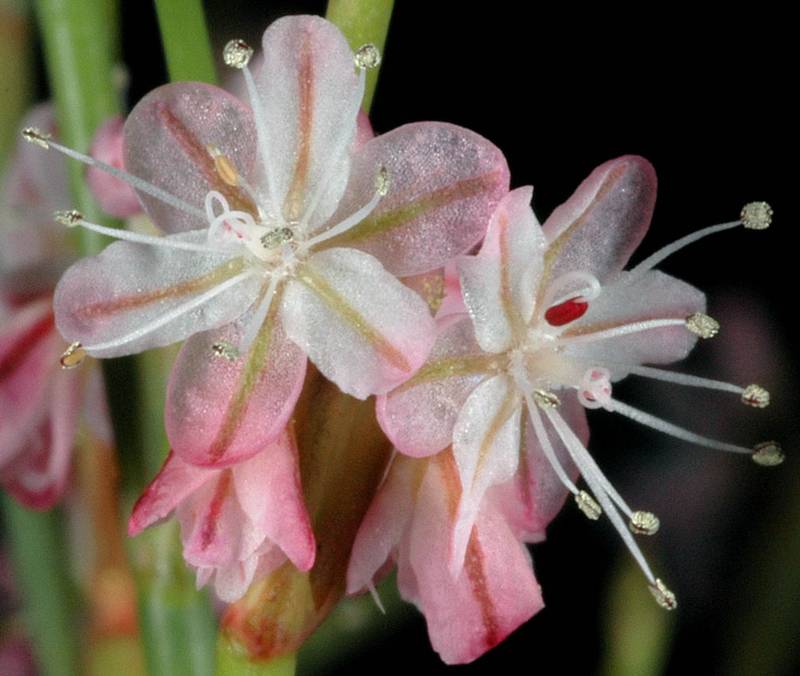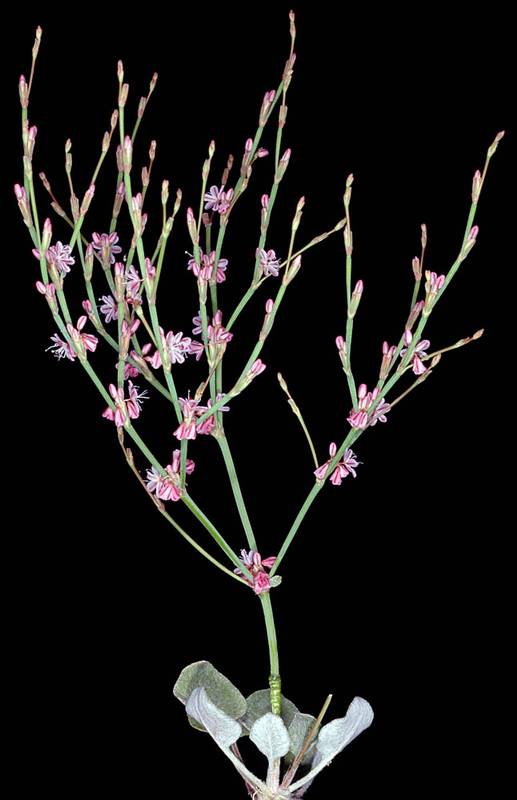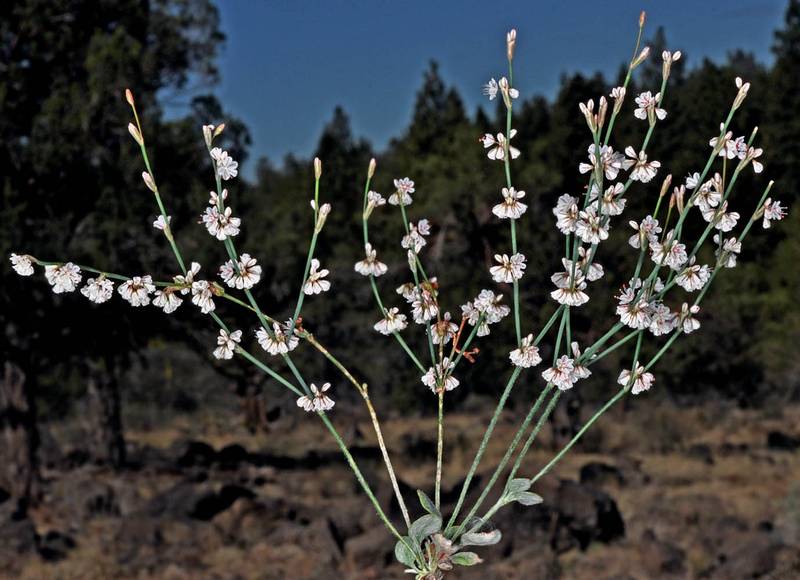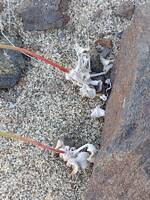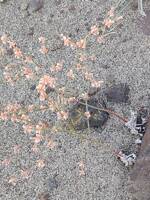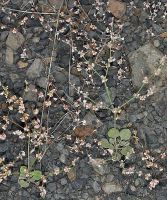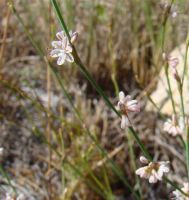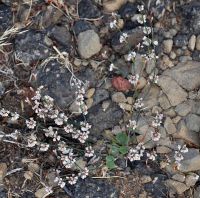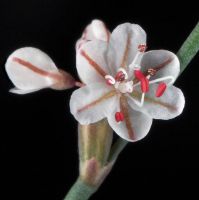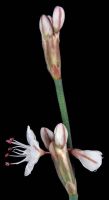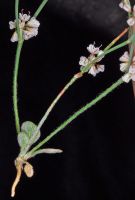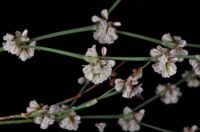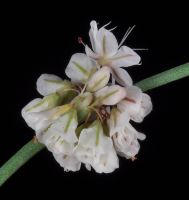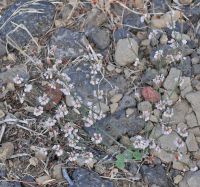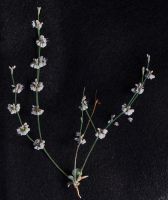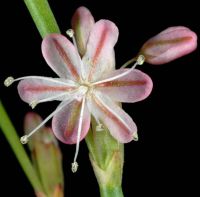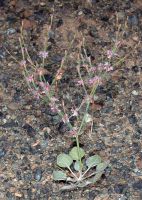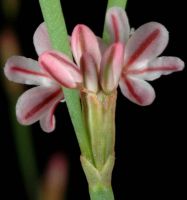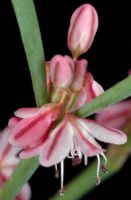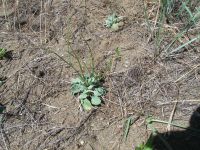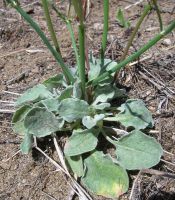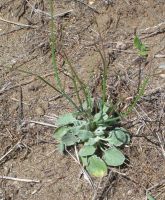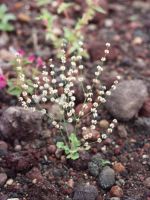Distribution: Occurring east of the Cascades crest in Washington; Washington to California, east to Idaho and Nevada.
Habitat: Sagebrush deserts and dry ponderosa pine forest openings; tolerant of dry, disturbed conditions.
Flowers: June-September
Origin: Native
Growth Duration: Annual
Conservation Status: Not of concern
Pollination: Bumblebees, bees, flies, butterflies, beetles, wasps
Upright annual 5-50 cm. tall with a single stem topped by a freely-branched inflorescence, and with numerous, petiolate leaves in a whorl a short distance above the base.
Sub-basal, the blade oval to broadly elliptic, 5-30 mm. long, gray-woolly beneath and gray-green above, the slender petiole 1-3 times as long as the blade.
Inflorescence freely-branched, with involucres 1 per node and sessile at the branch junctions and along the branches and on the branch tips, varying from cylindric and strongly ribbed up to 3 mm. long to cup-shaped and without ribs, 1.5-2 mm. long, and with the 5 lobes rounded and 1/5 the total length; tepals 1.5-2.5 mm. long, narrowly cup-shaped, white, pink or yellow.
Achene 3-angled.
Publication: Trans. Linn. Soc. London. 17: 416. 1836.
Eriogonum vimineum Dougl. ex Benth. ssp. shoshonense (A. Nelson) S. Stokes
Eriogonum vimineum Douglas ex Benth. var. shoshonense (A. Nelson) S. Stokes [HC]
Eriogonum vimineum Douglas ex Benth. var. vimineum [HC]
PNW Herbaria: Specimen records of Eriogonum vimineum in the Consortium of Pacific Northwest Herbaria database
WA Flora Checklist: Eriogonum vimineum checklist entry
OregonFlora: Eriogonum vimineum information
E-Flora BC: Eriogonum vimineum atlas page
CalPhotos: Eriogonum vimineum photos

